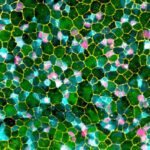Link to Pubmed [PMID] – 19846291
Curr. Opin. Neurobiol. 2009 Oct;19(5):461-70
The crucial role of microRNAs (miRNAs) in brain development is demonstrated by the dramatic apoptotic phenotypes of mouse mutants abolishing all miRNAs synthesis. Recent advances in Caenorhabditis elegans, Drosophila, zebrafish and mouse moved beyond this global understanding by targeting selected miRNAs. They indicate that single miRNAs successively modulate all steps of brain maturation, including patterning, neurogenesis, neuronal differentiation and subtype specification, and neuronal activity. In detail, they reveal an amazing functional complexity: specific miRNAs can either be used reiteratively, such as miR-9 in patterning, neurogenesis and differentiation, or concomitantly target different mRNAs in distinct cellular compartments, such as Pumilio or Limk1 that can be inhibited by miR-134 to control neuritogenesis or spine growth, respectively. Their regulation can be composite, either through multiple loci (miR-9) or in blocks of numerous miRNAs (miR-134). A major step remains to decipher their impact on brain function, in particular in the control of behaviour.
